About White Oak (Quercus alba)
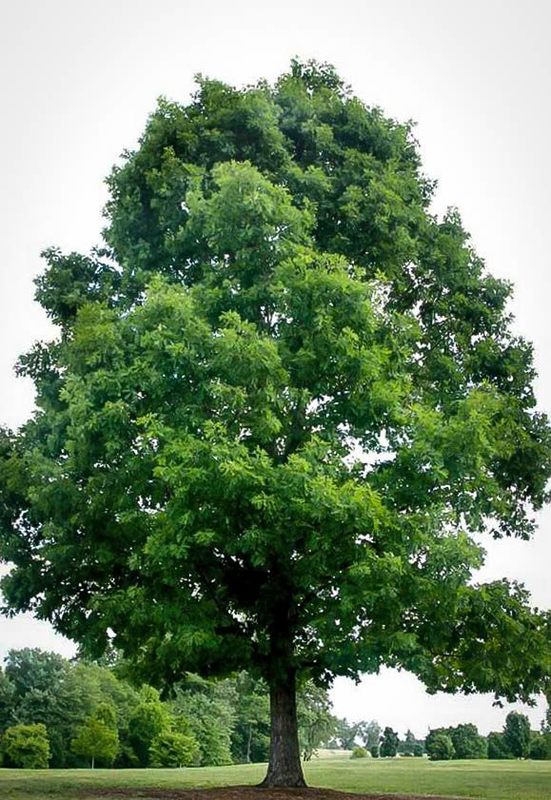
Summary
The white oak is a large, deciduous tree native to eastern and central North America. Known for their rounded canopy, deeply lobed leaves, and light gray bark, white oaks can grow up to 100 feet tall and live for centuries. White oak produces high-grade wood that is strong and rot-resistant, making it ideal for woodworking.
Identifying Features
Leaves are alternate and made up of 7-10 rounded lobes. They are typically 4-7 inches in length. The upper surface is bright green and smooth, with the underside being whitened and smooth. Fall colors can range from brown to red.
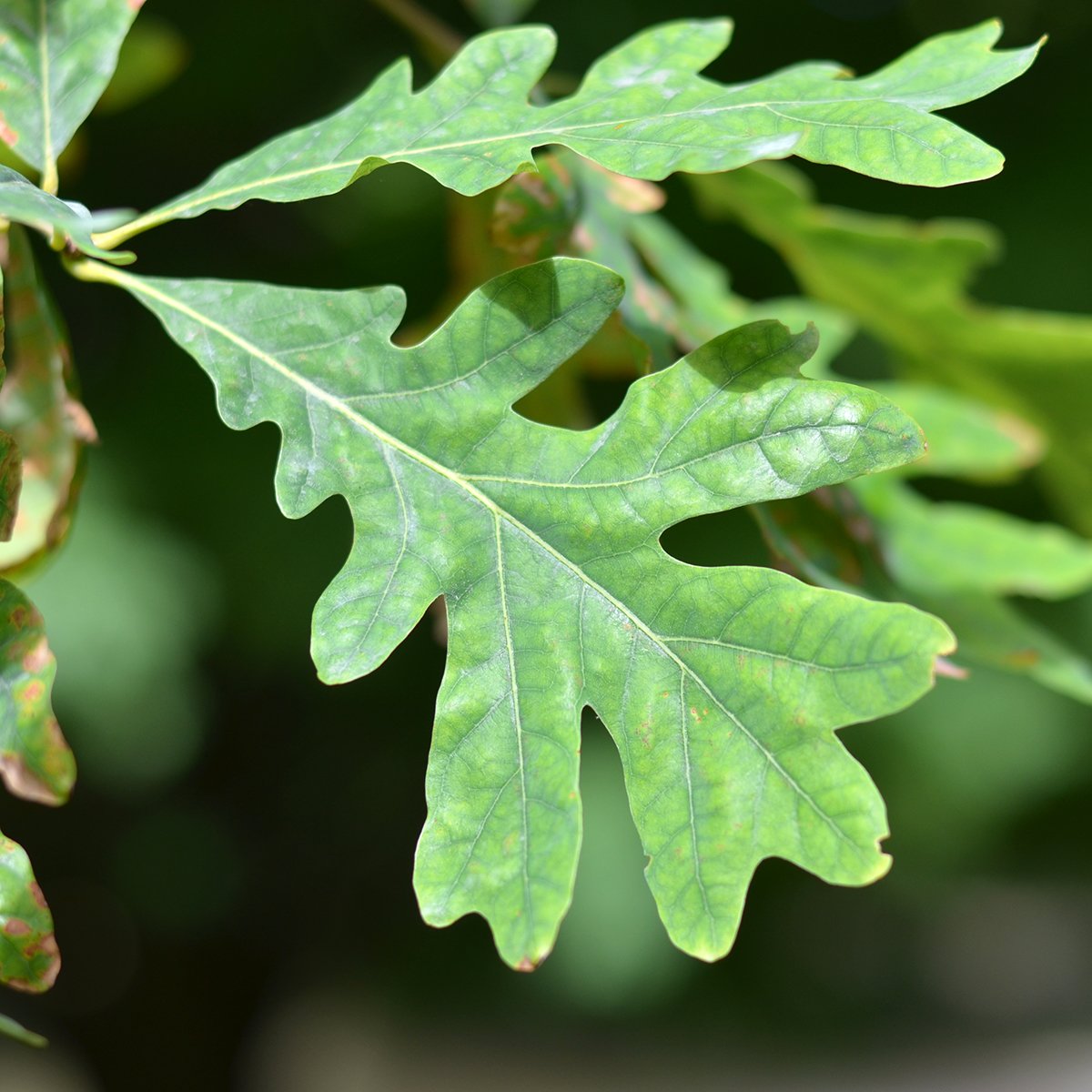
Bark is light gray to almost white in color and has a flaky-like appearance. 2 different types of bark patterns on the lower trunk can be seen:
- Blocky bark pattern:
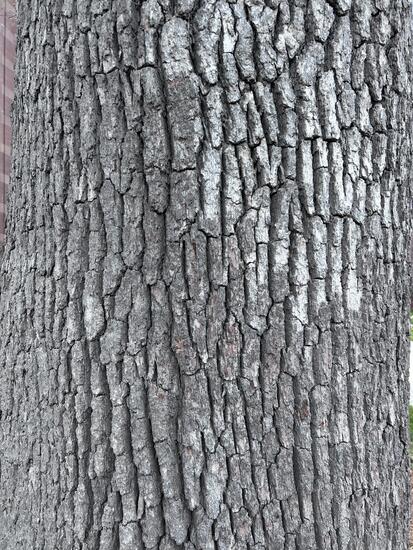
Flaky bark pattern with long plates, resembling shingles
- This pattern is always seen in the upper canopy trunk and limbs
- Flaky bark pattern:
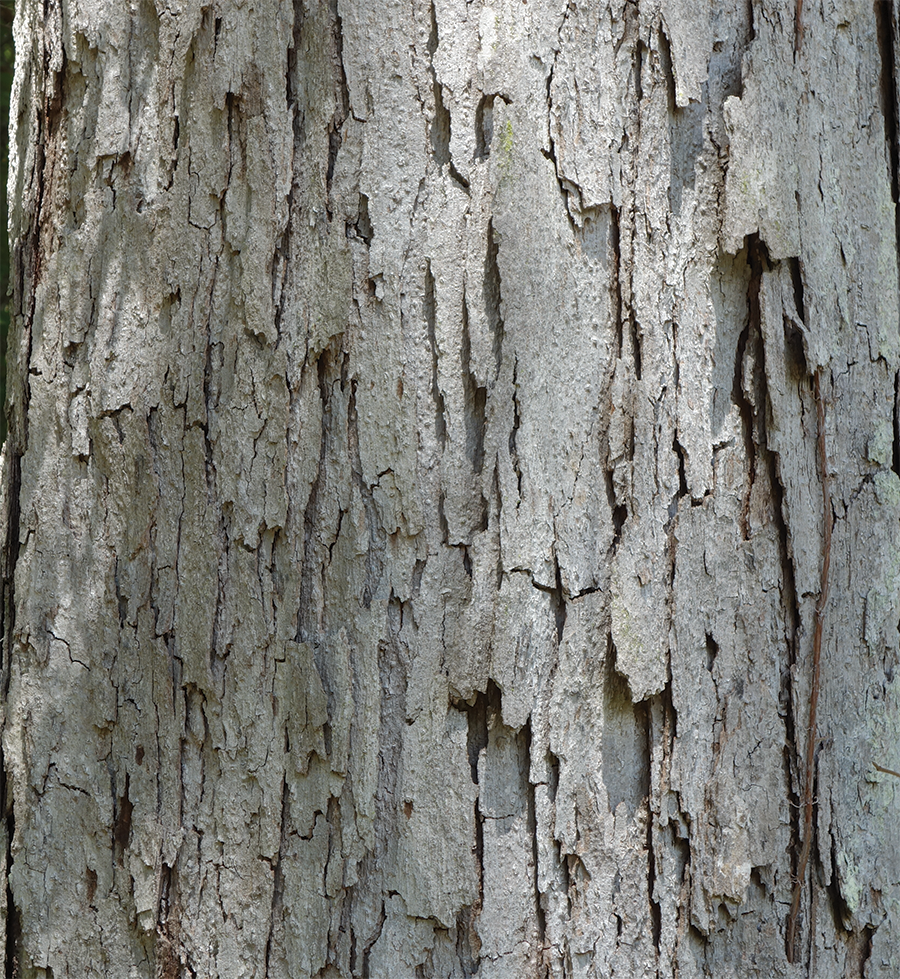
Acorns produced by these trees are about 1 inch long. They are oval to oblong with the “cap” of the acorn covering almost 1/4 of the total acorn. They start as light green and turn brown when they mature. They mature in one growing season and germinate following their dispersal in the fall.
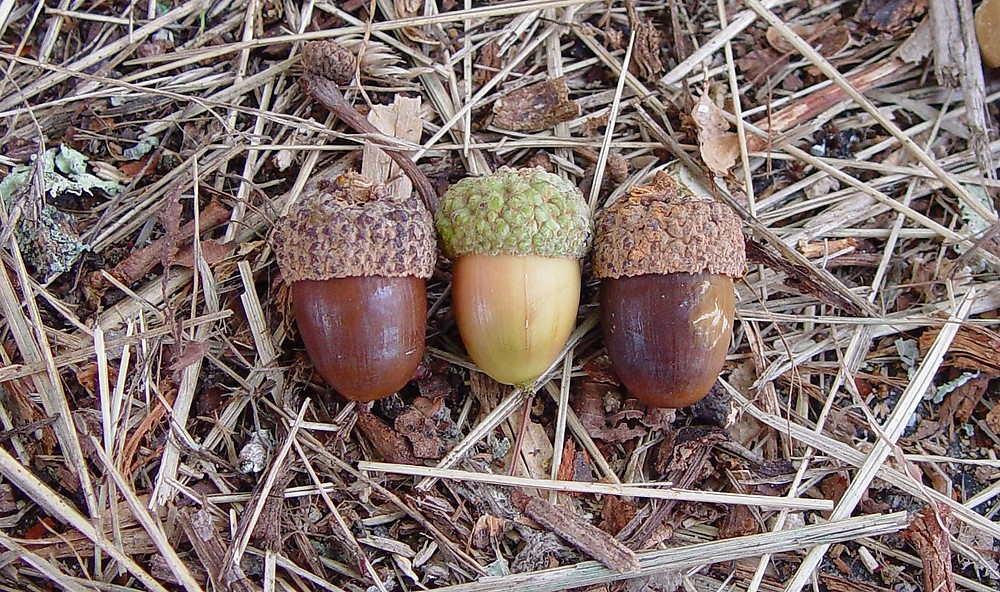
The leaves of the white oak look similar to to post oak, bur oak or overcup oak. What makes the white oak leaves distinguishable are their deep finger-like rounded lobes
White oak bark looks similar to the barks of multiple other oak species, including swamp white oak, swamp chestnut oak, and overcup oak.
Ecological Services
White Oaks provide food and shelter for many animals. Due to their large size, they are also able to sequester a large amount of carbon from the atmosphere, reducing the amount of greenhouse gases. White Oaks also have the ability to filter water through their roots, providing clean habitats for freshwater aquatic animals
Animal Uses and Relationships
- White oaks rely heavily on animals for the dispersal of their acorns, especially gray squirrels and eastern chipmunks via scatter hoarding (collecting and burying acorns as a future food soruce)
- Blue jays disperse the acorns over long distances, their flight has aided in the northward dispersal of the white oaks during the Pleistocene
- Mammals such as the white tailed deer, white-footed mice, and black bears all rely on acorns as a food source, especially prior to winter
- Shrews and gray squirrels help white oaks by consuming weevil larvae in the acorns, increasing the chances that the acorn germinates
- White oaks are a common habitat for over 500 different species of moths nad butterflies
- White oaks are threatened by the invasive spongy moth, which causes defoliation and eventually death
Fun Facts
- White Oaks can grow to over 100 feet tall.
- They prefer a more acidic soil to grow in.
- White Oak is the state tree of Connecticut, Illinois, and Maryland.
- White Oaks were used to create the USS Constitution, a large naval boat used during the War of 1812.
- White Oaks are often used to create the wooden barrels used to store wine and whiskey.
Indigenous History/Uses
- acorns for food
- medicinal purposes, specifically an astringent, tonic, antiseptic, emetic, and supported healing from long intermittent fevers, indigestion, milky urine, and chronic dysentery
- bathed in bark tea for chills and fevers, as well as drank it for asthma relief, or applied it directly to a sore
- decoction of inner bark used for lost voice
- used as a craft product as splits for baskets, lumber, firewood, furniture and other projects
- bowmaking
- leaves used to wrap dough for breadmaking
Conservation
While there are many mature white oaks across the eastern United States, there are relatively few seedlings and saplings growing. This is indicative of the overall regeneration of white oaks being on the decline. Factors contributing to this decline include:
- fire suppression
- overabundant deer populations
- land-use changes, invasive species
- climate change
- competition from other species like the red maple, whose growth and expansion has been favored by recent conditions
Ultimately, the conservation of the white oak can be optimized through a multi-faceted approach of prescribed burns, protecting saplings, and limiting the influence of deer.
References
Rogers, R. (n.d.). White Oak. Quercus alba L. https://www.srs.fs.usda.gov/pubs/misc/ag_654/volume_2/quercus/alba.htm#:~:text=White%20oak%20is%20sometimes%20planted,has%20a%20slow%20growth%20rat
Horn, C. (2018, October 1). Notes of Oak. American Forests. https://www.americanforests.org/article/notes-of-oak/#:~:text=ECOLOGICAL%20HEAVYWEIGHT,watershed%20health%20and%20climate%20mitigation.
White oak. Arbor Day Foundation. (n.d.). https://shop.arborday.org/treeguide/351?srsltid=AfmBOorwdQzeJnaXTz1cnSJVDi-sWSzz7vrn1Q5Rp5pnA_anVO4mXjgO
Oak: Indigenous peoples’ perspective project: Programs: Events. Adkins Arboretum. (n.d.). https://www.adkinsarboretum.org/programs_events/ipp/oak.html
McEwan, R. W., Dyer, J. M., & Pederson, N. (2010b). Multiple interacting ecosystem drivers: Toward an encompassing hypothesis of Oak Forest Dynamics across Eastern North America. Ecography, 34(2), 244–256. https://doi.org/10.1111/j.1600-0587.2010.06390.x
Thomas, L., and Morris, D. 2022. Landowners Guide to Identification and Char- acteristics: White Oak. Cooperative Extension Service, University of Kentucky, Department of Forestry and Natural Resources, FOR-139. 3pp.